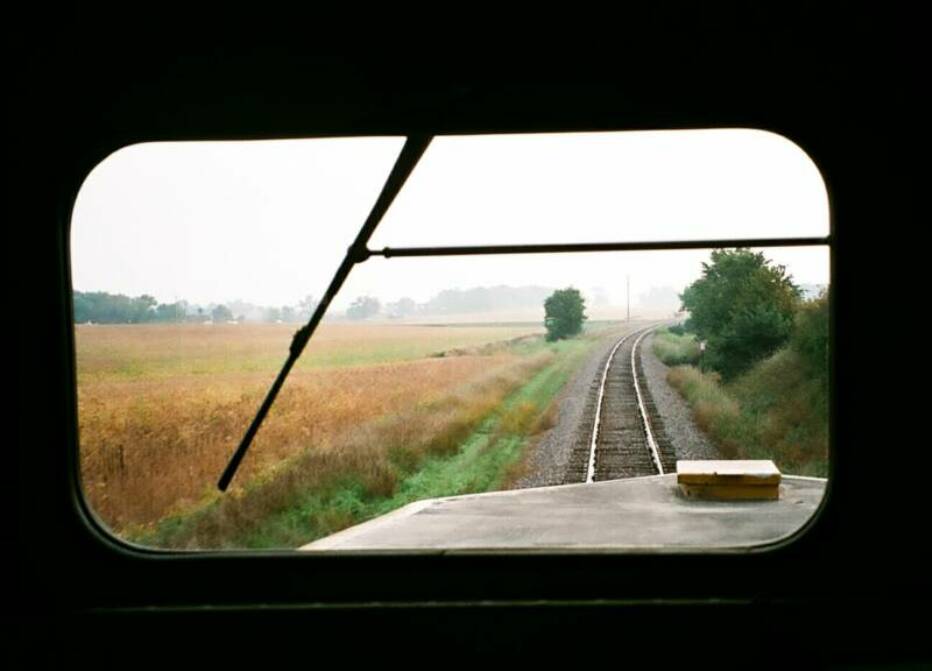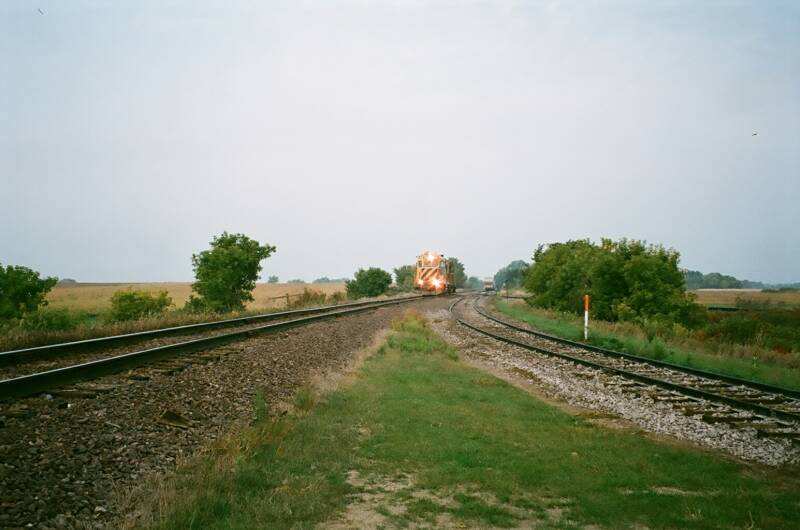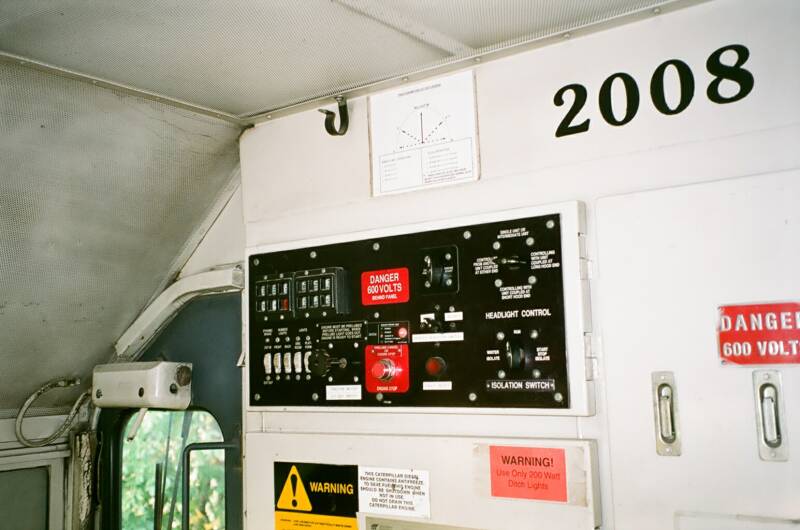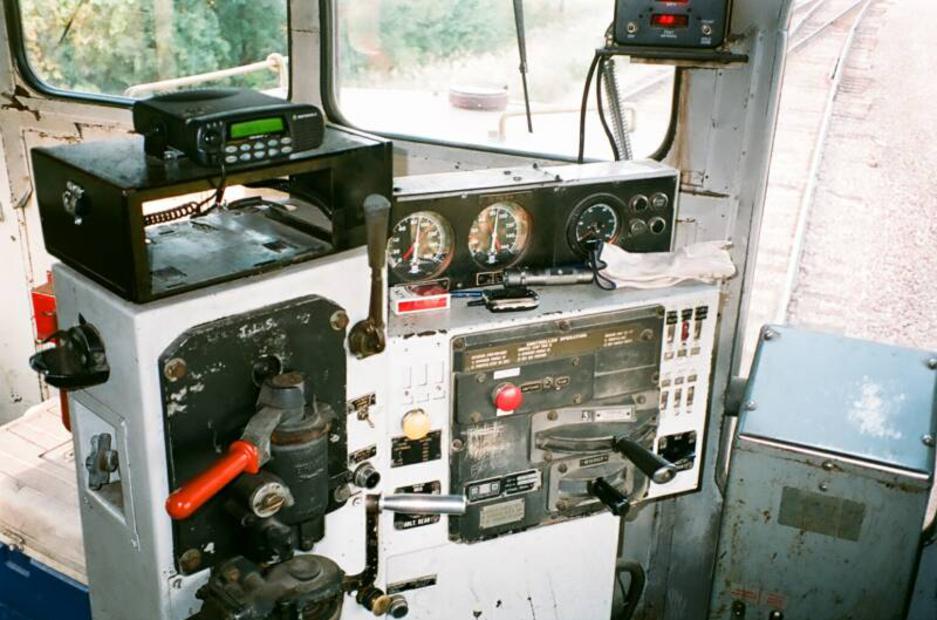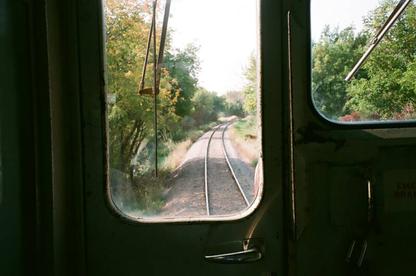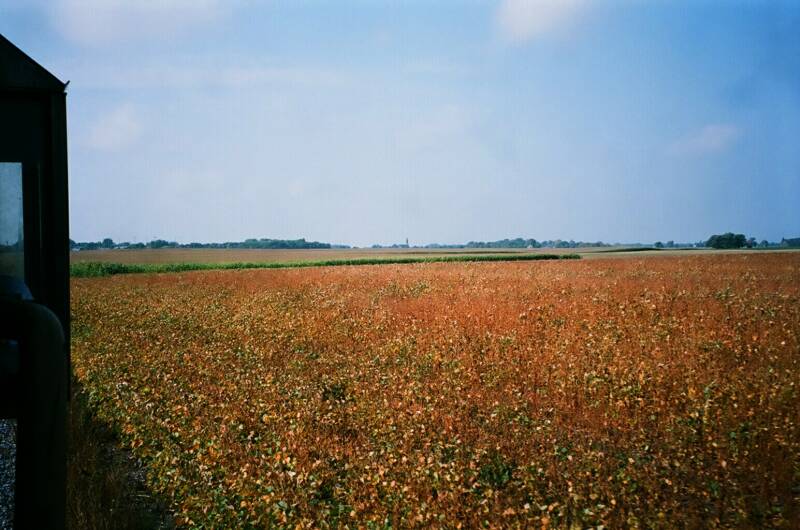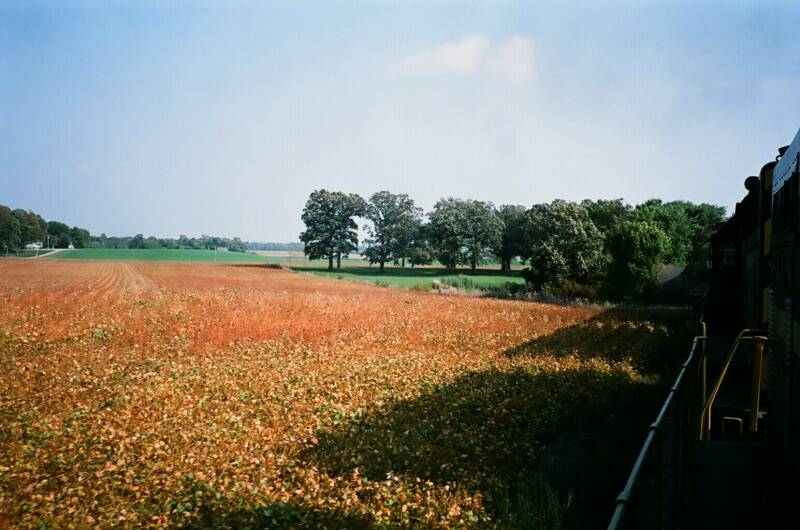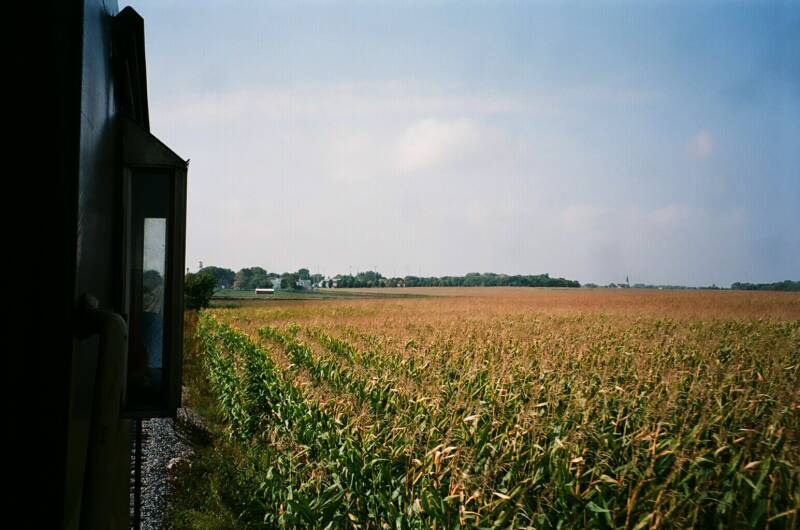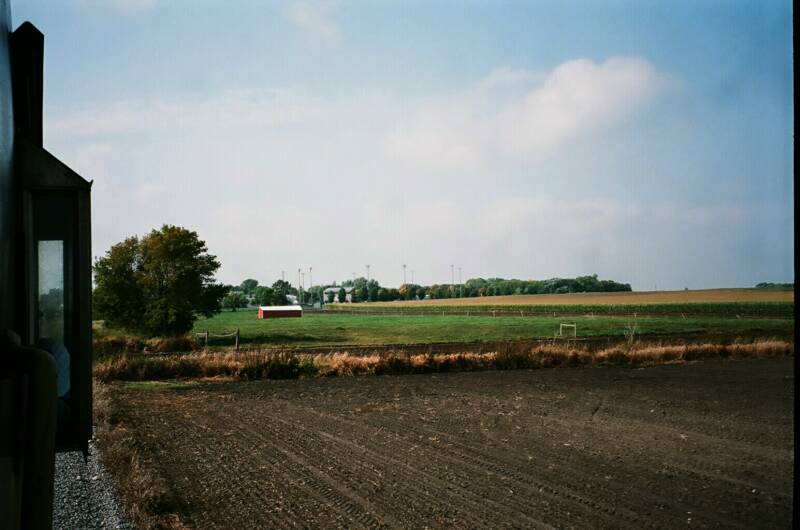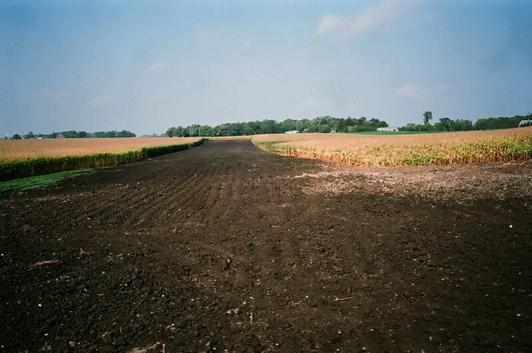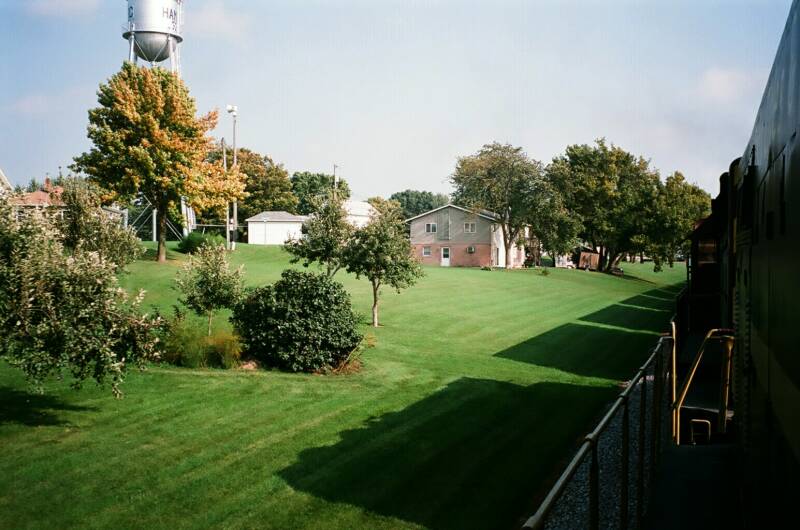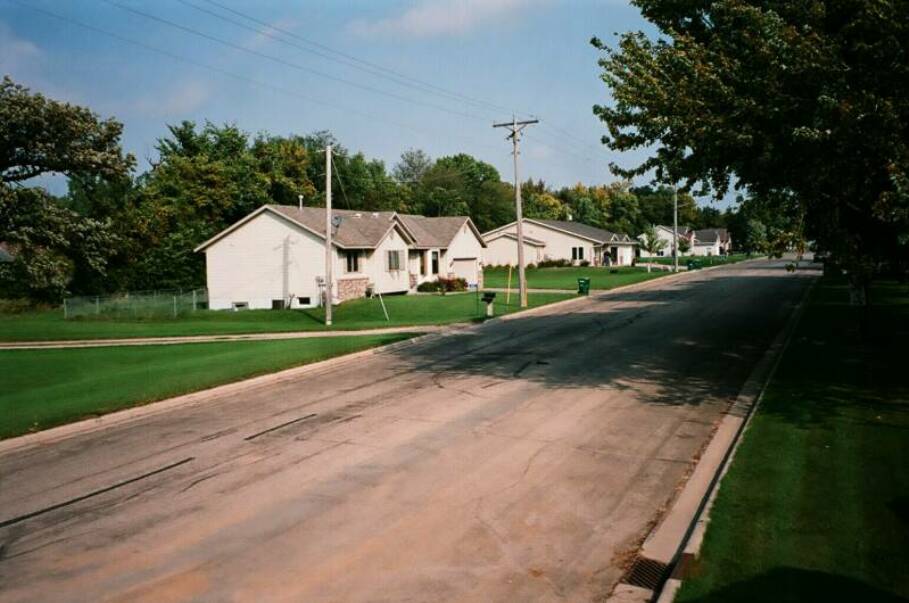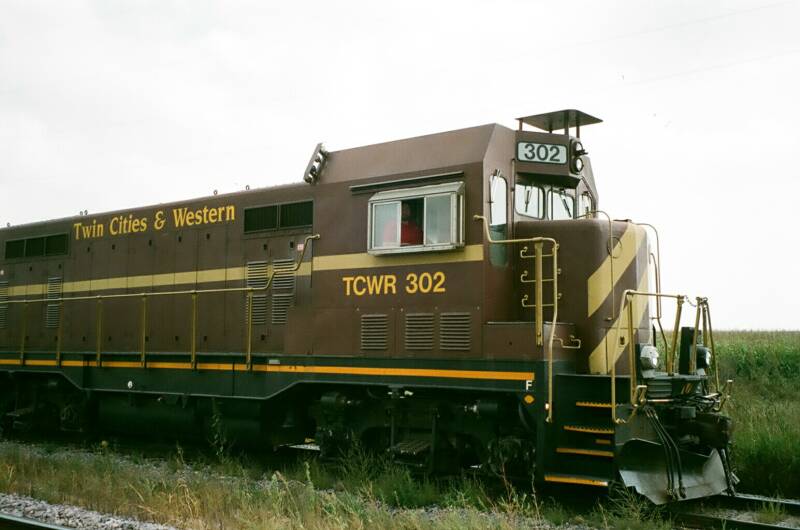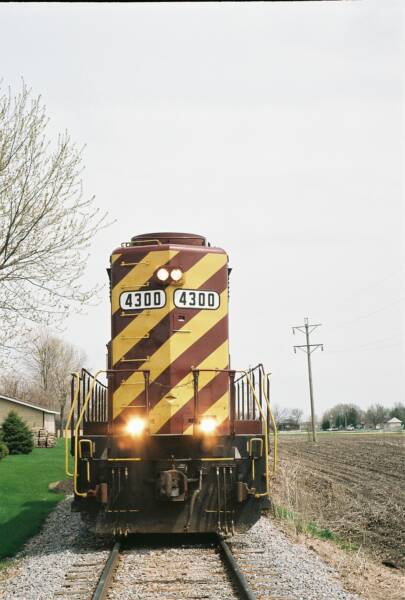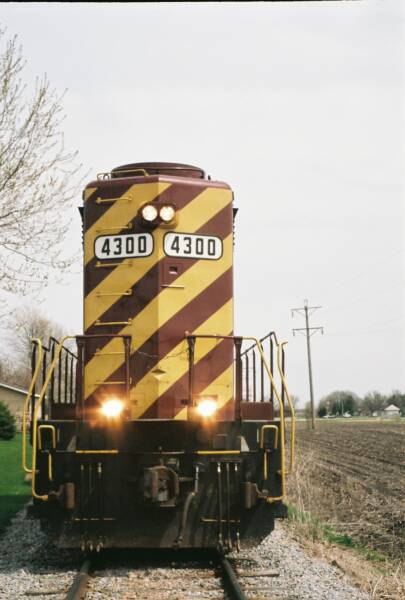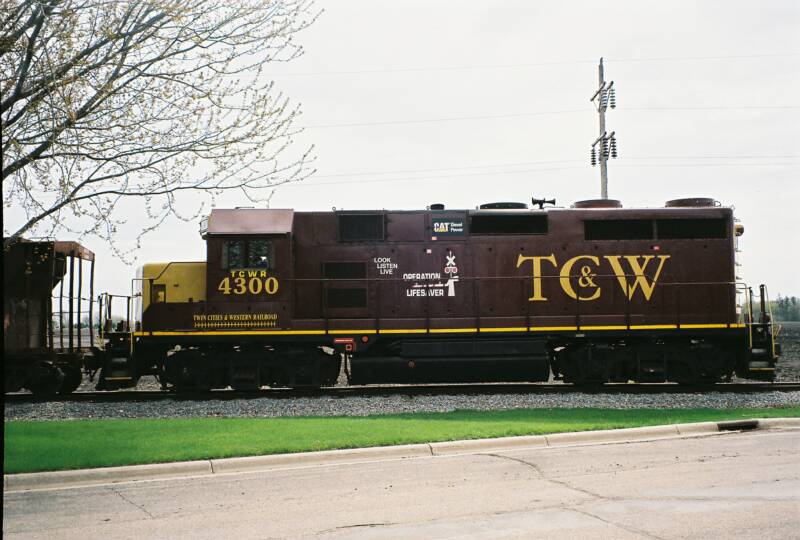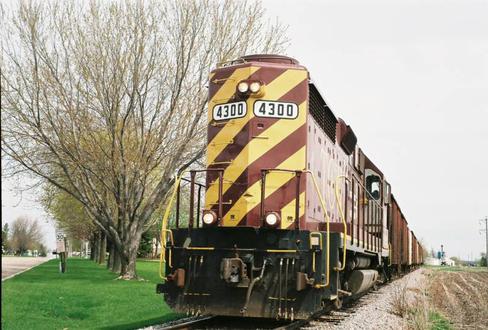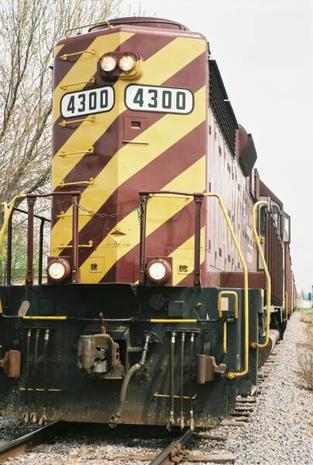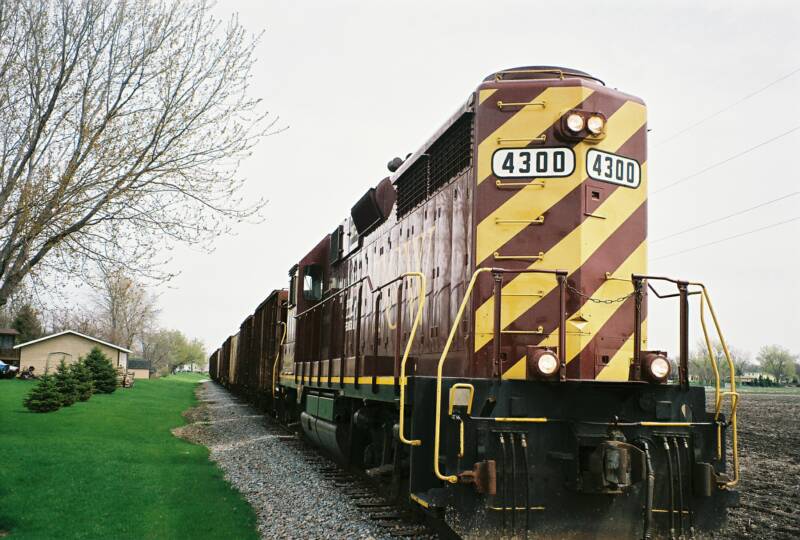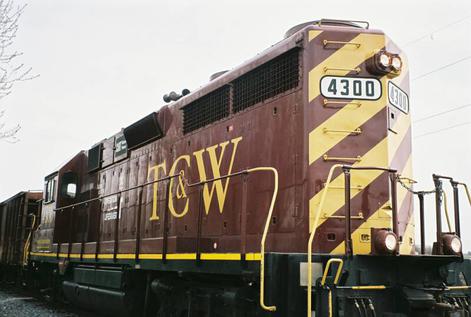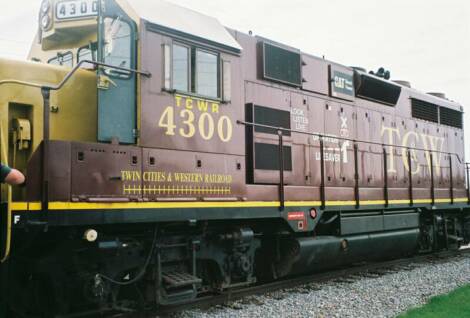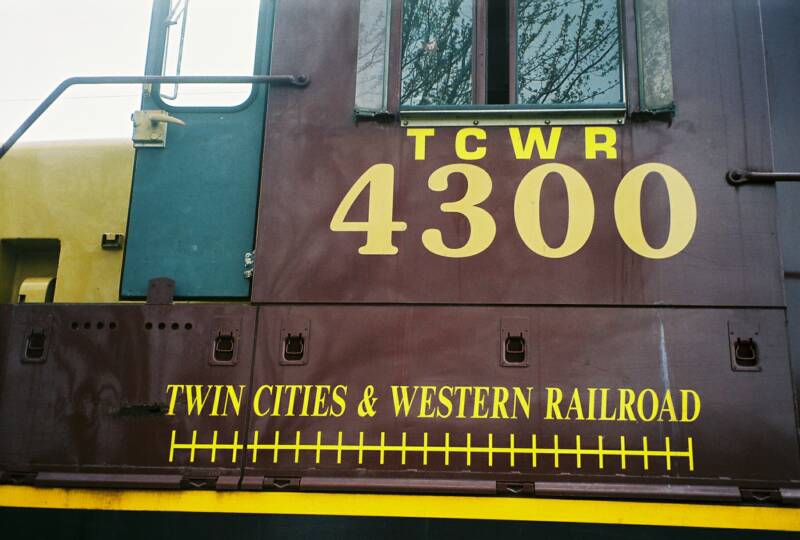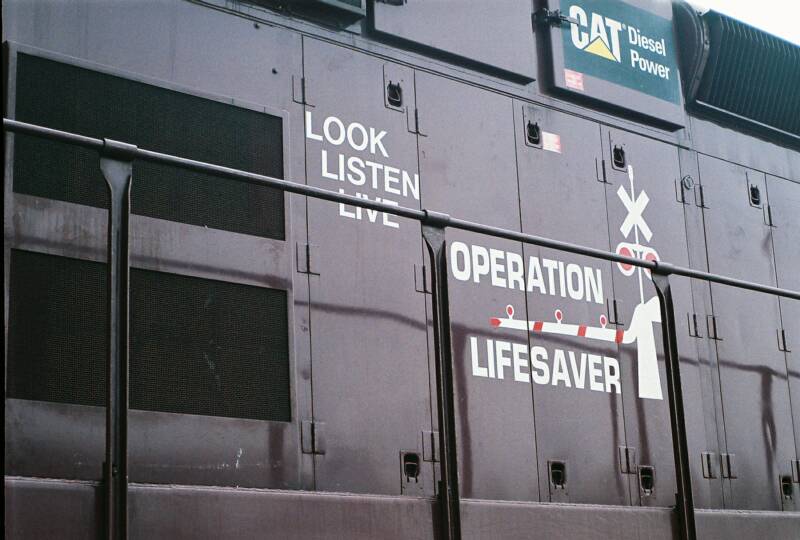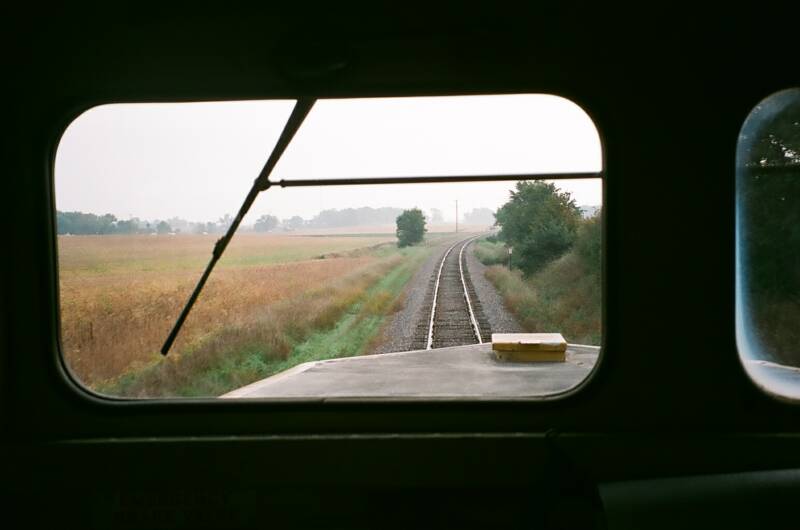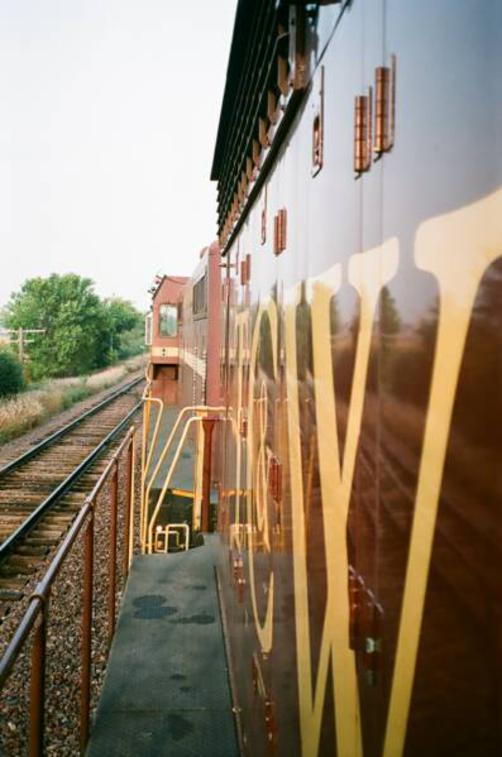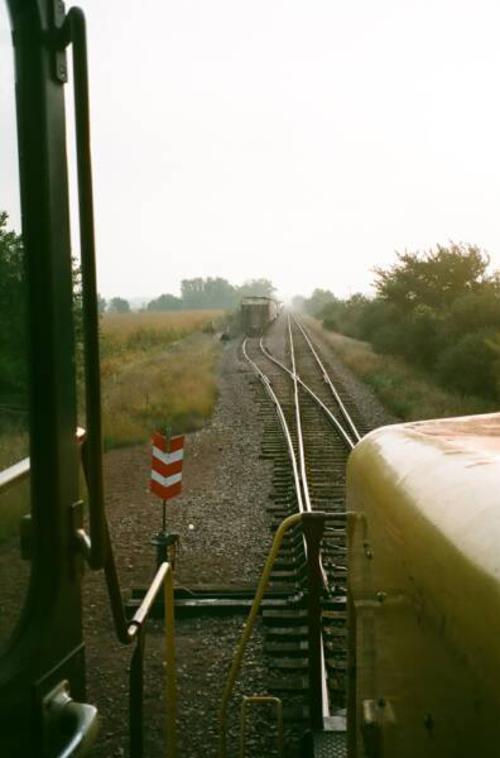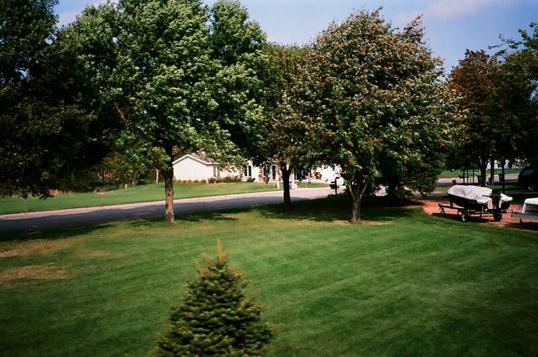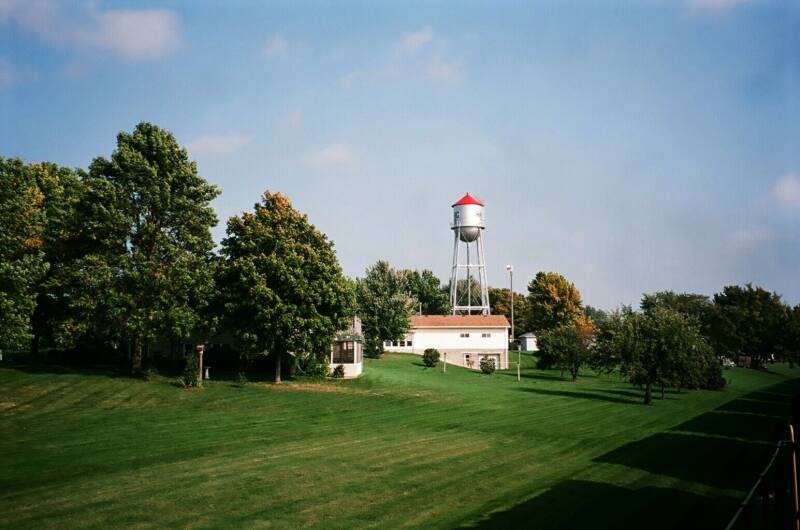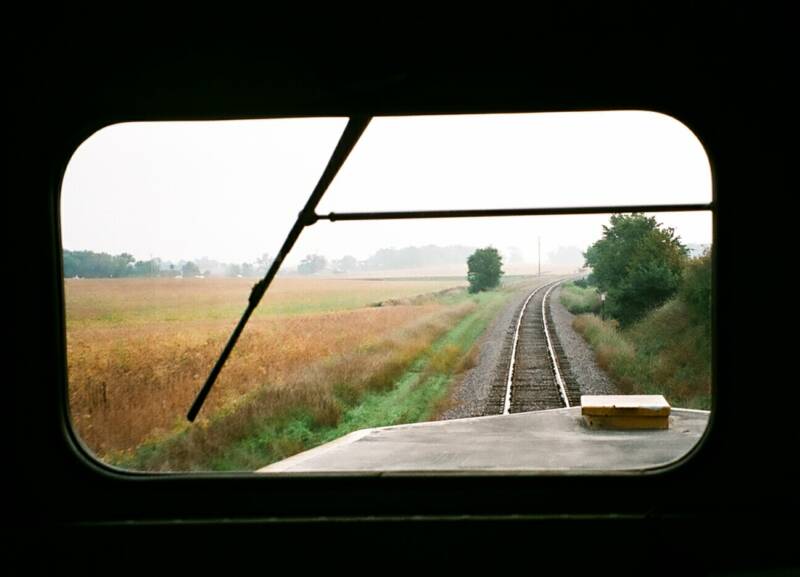MY DAY ABOARD A TRAIN LOCOMOTIVE
(Also Called The Train 'Engine')
I recently spent a day aboard a train engine (locomotive) on the Minnesota Prairie Line (MPL); a rail line that is owned by the five Minnesota counties it traverses and is operated by the Twin Cities & Western Railroad Company (TC&WRR). The reason I did this was to find out what a typical day in the life of an engineer
is like.
These pictures
are the 'video' portion; the current 'background audio' is a collection of sounds that I put together and is only temporary. They will soon be replaced with an interview with Mark Wagener, the President of the Twin Cities &
Western Railroad. So check back frequently; enjoy the pictures (which will have short descriptions added to them as this Webpage progresses) and listen to the sounds of the Minnesota Prairie Line; operated by the great folks at the Twin Cities & Western Railroad.
In the meantime, to read more information about the TC&W and it's locomotives, CLICK HERE.
Inside the cab of TC&W Locomotive 302. This engine was originally built as Santa Fe Engine #261C in August, 1951.
Here's TC&W's Engine 2008; originally built as Chicago, Burlington & Quincy GP20 #906 in February, 1961. This is the train locomotive that I boarded to spend my day on the Minnesota Prairie Line. This picture shows Engine 2008 heading east as it is pulling into the unincorporated town of Bongards; a 'wide spot in the road' between the Minnesota cities of Cologne and Norwood/Young America.
Although you can't see it in this picture, there is also another locomotive behind the 2008; it's Engine 302 and it's facing the opposite direction as the 2008. The reason for that is that when the train has to pull the train cars in the opposite direction, the engineer just stops the train, walks to the other locomotive, and 'drives' the train in the opposite direction. In part, this is possible because the engineer can control either of the two 'unoccupied' locomotives from the inside of the one where the engineer sits. It's kinda like 'remote control'.
And while you'd think that the inside of the locomotives are noisy and the ride 'bumpy', it really isn't. I was surprised at how quiet and comfortable the ride really was. (And how personable, pleasant and accommodating the engineer and conductor were.)
And yes; Bongards is where the world famous cheese is made. (I'd normally provide a link to the Bongards Cheese Website but I don't want you to leave this one !!)
This is the engineer's 'office' for his shift which can be as long as twelve hours. This is where Chad the engineer sits.
The panel below has the controls that allow the engineer to determine which engine cab is actually controlling the trains operation.
The engineer of the TC&W Locomotive always has instant radio contact with his dispatcher, other trains and track maintneance personnel called a 'Section Crew'.
This is what the engineer of the train sees as he looks out the window in front of him.
Notice the two tracks coming together above.
I'd like to be able to tell you that this is the handle that blows the train's whistle, but really it isn't. Diesel engines don't have whistlesl they have air air horns instead. So now, this lever is what the engineer uses to sound the train's air horn.
The levers shown to the right are used to control the train's air brakes used to stop the train.
The levers shown above control the train's speed and determine if the train goes backward or forward. The train can travel no faster than 10 MPH.
Below and to the left is a similar engine control panel in the cab of the second engine that I spent the day in.
Here's engineer Chad controlling the train and blowing it's horn as we approach a 'grade crossing'. (2 longs, a short and another long.)
The unit below with the red numbers is call the 'ALERTER' and is also the trains 'speedometer' that tells the engineer how fast the train is traveling. It also periodically makes a sound that requitres the engineer to respond to it. If he doesn't, this unit literally stops the train.
The gauges below tell the engineer the air pressure of the train. The train isn't allowed to move until the proper air pressure is attained.
Here we are 'rounding the bend' between Norwood/Young America and Hamburg (Minnesota).
Another view out of the front of Engine 302.
And so is this.
This picture from the cab of Locomotive 2008, show us approaching some rail cars that had to be brought back west from the siding between Norwood/Young America and Cologne.
This is a picture taken from outside of Engine 302 looking toward the back of the train. The engine behind us in this picture is Engine 2008; and the rest of the train cars are behind Engine 2008.
Coming into Hamburg (Minnesota) from the east; heading west. If you look real, real close, you can see the Hamburg Ball Park; home of the Hamburg Hawks.
Coming into Hamburg (Minnesota) from the east; heading west but looking to the northwest.
Again, this is heading into Hamburg from the east but we're heading west. See the Hamburg water tower? And the ball park's lights?
This is about the same picture as above only it was taken a little farther west from where the above picture was taken.
Here's one of the locations where the newly installed pipeline crosses underneath the tracks of the Minnesota Prairie Line Railroad.
Didn't whoever installed the oil pipeline do a nice job of restoring 'Mother Earth' to her original condition?
Getting closer to the eastern edge of Hamburg, the lights of the Hamburg Hawks Ball Park are now clearly visible.
This is basically the same picture as above only we were getting closer to the City of Hamburg.
Here's another picture taken just east of Hamburg, looking toward the back of the train as we were heading west.
Here we are, traveling east and arriving in Hamburg at the northeast end of the city. The Hamburg Ball Park is now easily discernable as is the Farmer's Elevator. See the water tower in the background?
Getting closer to the Farmer's Elevator.
And even closer yet !
How's this for a 'trackside view' ?
See the American Flag flying proudly ?
We've now passed through the main part of town, we're still headed west and crossing County Road 50, the Farmer's Elevator is in the background and Bicentennial Park is on the opposite side of the train.
Looking southwest while aboard the train from where the track cross County Road 50 in Hamburg.
If you've ever wondered what the Parkside Tavern looks like from one of the many trains that pass through Hamburg, here's your answer !!
The City of Hamburg water tower 'standing tall' and showing off it's new paint job; finished just in time for Hamburg's 125 Year Anniversary Celebration.
Is this a picture of the Hamburg Municipal Golf Course? It surely could be; what with all of the well manicured lawns, etc. Unfortunately, Hamburg doesn't have a Municipal Golf Course.
Looking north on Jacob Street from the Minnesota Prairie Line Railroad crossing.
This could easily be the 'Back 9' of the Hamburg Municipal Golf Course. (If it had one.)
Next stop; Arlington at the Seneca Company.
Ever wonder what Seneca does with all of the husks from the corn it processes?
Here's your answer .......
Here's the view out the front of Engine 302 as we pull away from the Seneca plant.
Heading back to the etanol plant in Winthrop.
On this portion of the line, we can't travel any faster than
7 MPH.
Fortunately, it was a beautiful day for a train ride and we never had to us the locomotive's windshield wipers.
If you're ever going to ride a train, late summer
or early fall provides the most picturesque scenery.
Winthrop, Minnesota straight ahead.
One last view out the front of TC&W Railroad's Engine 302.
See Engineer Chad In The
Window Below?
This is a picture that I took last summer (2008) when the TC&W Engine 4300 made a stop in Hamburg. Although I didn't know it at the time, Engineer Chad, the engineer who I spent the day with aboard Engines 302 and 2008, was the engineer of this locomotive as it creeped through Hamburg.
As long as it was stopped, I decided to take some pictures of it; hope you enjoy them !
We returned to the ethanol plant in Winthrop about 2:15 in the afternoon and it was time for me to end my day with Engineer Chad and Conductor Al; two very fine representatives of the Twin Cities & Western Railroad.
Riding in the cab of a train locomotive is something I've always wanted to do but never thought was possible. Yet, it DID happen; this is something I've been working on since the spring of 2008. My personal and sincere thanks to Engineer Chad, Conductor Al, Supervisor Dave for their 'hospitality' as well as to TW&W Railroad President Mark Wagener and Operations Manager Bob Suko for making my dream come true.
Check back later on this Website; I'll be interviewing Mark Wegener, the railroad's president
to talk about his railroad and provide an insight as to the
importance railroads in today's market.
Like all of my other 'DELTA ON DEMANDS' shows,
it'll be interesting, informative and available
24/7 on this Webpage.
Next time you see a
train go by, wave
at the engineer.
I'll just bet that he'll
wave back !!
(It might even be
Chad or Al
waving back at you!)
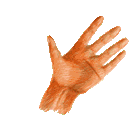
This is the City of Hamburg water tower. It is 95 feet high and holds 55,000 gallons of water.
Greg's yard
ALWAYS
looks nice.
Welcome to my Webpage about the
Twin Cities & Western Railroad Company !!
Ever since I was a wee tot, trains have always brought an unexplainable fascination to me. I remember
back in the sixth grade sitting in Mrs. Erickson's classroom at Widsten Elementary School in Wayzata (Minnesota) and hearing the powerful steam locomotives blowing their whistles as the pulled the railroad
cars behind them through the city. The only time I was ever asked to leave a school classroom was in
Mrs. Erickson's 6th grade class; a train was chugging through Wayzata with it's whistle blowing; I
couldn't help myself. Without warning, I blurted out, "Hey kids; here comes Casey Jones !!'; the
same words used by a character played by Roger Awsumb when he opened his 'kids program'
"Lunch With Casey' on the Twin Cities television station WTCN every weekday at noon.
It has always been my dream to climb aboard and spend a day
with the engineers of a train and it finally happened September 22, 2008.
DID YOU KNOW ??
The diesel locomotive that pulls a train really isn't a diesel engine at all !! At least not in the conventional meaning. Diesel locomotive engines really aren't powered by diesel fuel at all; instead, the locomotive that pulls the train is moved by ELECTRIC POWER; NOT diesel power.
That's right !! What is normally called a 'diesel engine' really, in all actuality, is an ELECTRIC engine. It uses electric motors to turn the wheels, and the electricity to turn the electric motors connected to the locomotives wheels comes from a generator that is driven by a motor that runs on diesel fuel.
© 2010 DELTA DICK PRODUCTIONS
© 2010 DELTA DICK PRODUCTIONS
 | ||||||
PLEASE NOTE: Visitors To My Many Websites May Have Noticed That There Is An 'Issue' With The Audio Associated With Every
Webpage Of Each Website.Simply Put,The Audio On Each Webpage Is SUPPOSED To Begin Playing When The
To Re-Open The Webpage To Automatically Hear The Audio Imbedded In The Webpage !!
Or, Just Use The FIREFOX Browser.
